
New to Running? We’ve Got You Covered.
A couple of years ago, I’d have never labeled myself a runner.
I’d get out there a few times a week and go through cycles of love and hate. Putting pressure to hit a certain pace every time. The whole running thing never clicked. Until it did. I ditched the pace, ditched the expectations, and started unapologetically calling myself a runner. Because I was.
Like learning anything new, learning to run takes effort and consistency. But, there are a few tricks of the trade that can help you learn to love the process and have a hell of a lot of fun along the way.
1. You don’t have to be fast to be a runner.
The biggest learning curve is learning to let go of your self doubt and to let yourself just be. Put one foot in front of the other – who cares at what speed? This is especially true for new runners or runners returning to the sport after a long break.
Allow your body to adjust to new movement in a judgment-free environment (that includes self-judgment). Keep it slow, and at lower intensities. Avoiding pushing too hard too fast. Otherwise, overtraining will increase your likelihood of getting injured.
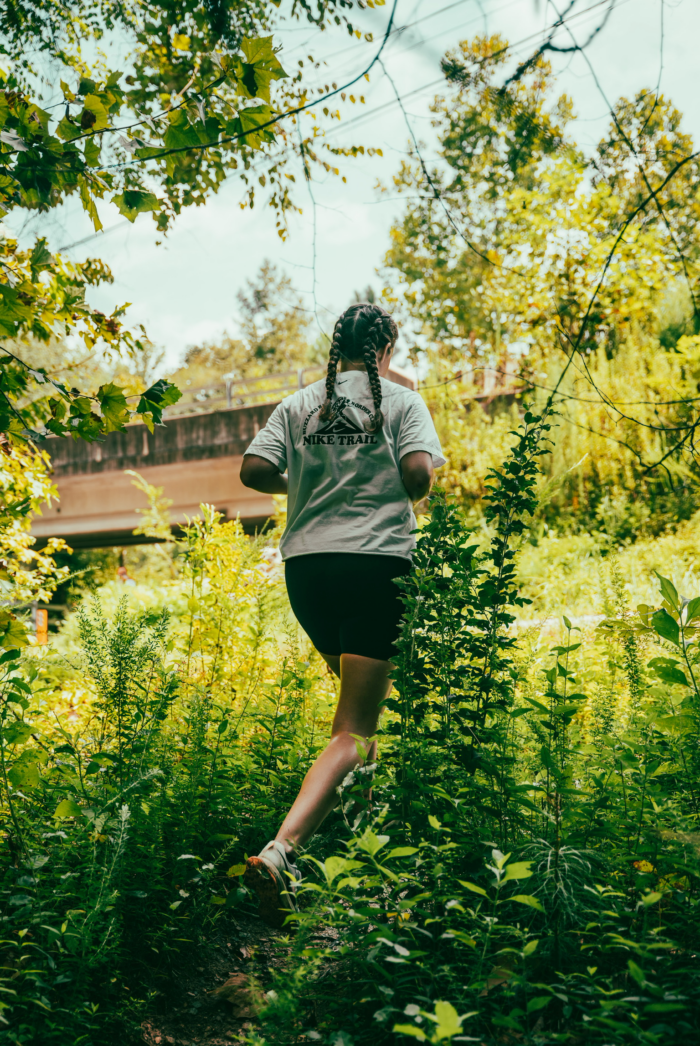
2. Run-walks count.
Pioneered by Jeff Galloway (‘72 American Olympian), the run-walk training method is tried and true. If you aren’t comfortable running for longer than one minute, that’s totally okay! Try one minute of running, one minute of walking and repeat 10 times to see how you feel. Play around with different combinations of walk/run intervals as you go, or consult online training plans.
As you begin to feel more confident in your stamina, try running longer intervals. Soon enough you’ll be running for 20 minutes straight without having to stop. Easy effort is the key to understanding how long you can actually run. If you run too hard too early, you’ll be left thinking you can’t run that long. Slow down and enjoy the run!
3. Keep your gear simple.
As much as I’m a big believer in the “look good, feel good” philosophy, we all start off in different places. The beauty of running is that you really don’t have to have all of the fancy gear to lace up and go.
Feel free to start off your journey with whatever you can find in the closet. If you’re hesitant to run because you don’t think you have the gear, trust me: Even an old pair of shorts and socks with holes in them will do.
Once you’re ready for some running-specific gear, it’s all about the staples: A good pair of shoes, solid socks, and whatever clothing you think will be comfortable.
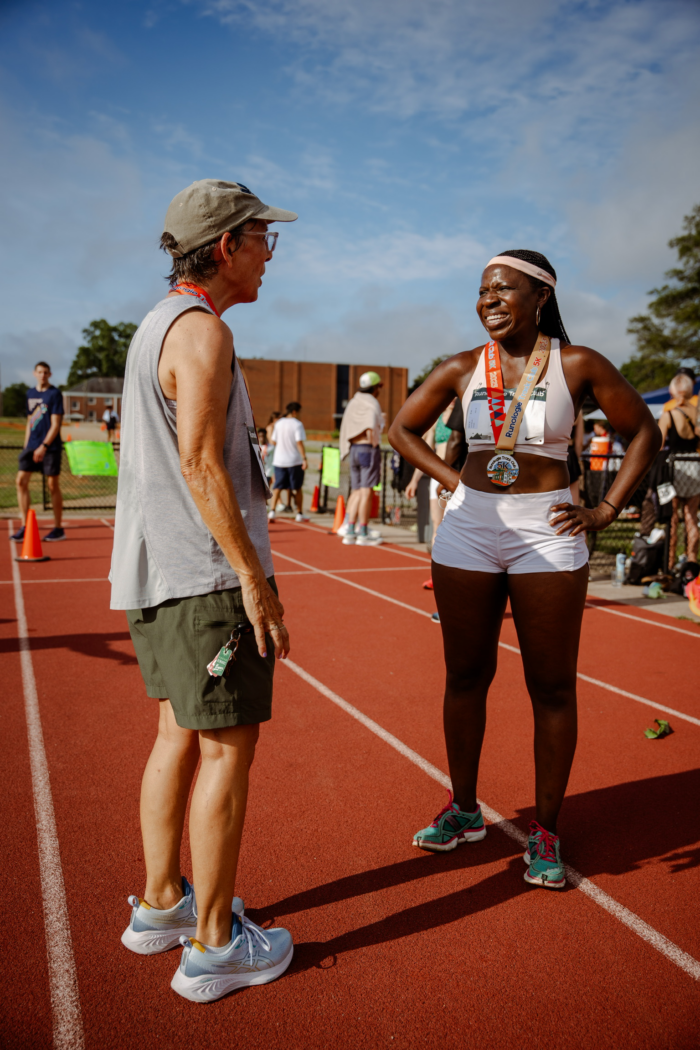
In Raleigh, the best place for running apparel and running shoes is Runologie (unbiased opinion). Hop in for a visit and try on the whole store. We can never pull too many shoes for you, it’s literally our job. A good pair of shoes is one that keeps your joints happy, especially your knees, and your feet un-blistered.
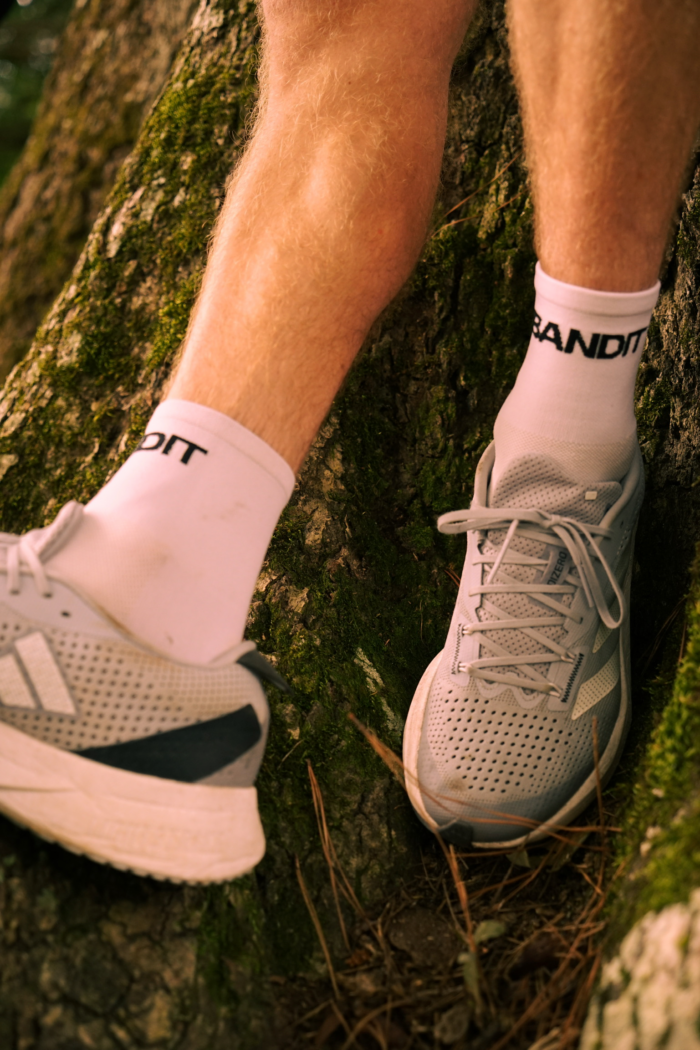
Socks are a great help with this, too. My favorites are Bandit Running’s quarter socks and Feetures’ elite socks. The most important thing is making sure there’s a tight, comfortable layer there to prevent blisters (something that can rain on any runner’s parade).
When you’re ready to invest in more gear, we’ll always be around. But for now, don’t let the little things be your barrier to entry!
4. Hydrate or Diedrate.
This is important throughout the day, but is another thing to not overcomplicate or overdo. During your run, just drink when you’re thirsty. Guzzling water right before a run is unlikely to benefit you, or keep you from getting thirsty during your run. Frankly, it’ll cause more cramps and discomfort than it’s worth. Sip on some water throughout the day, or have a small bottle with you during your run.
A good rule of thumb is “half your bodyweight in ounces.” For example, someone who weighs 160lbs should shoot for 80oz, or a little under 3 liters daily.
5. Run with friends.
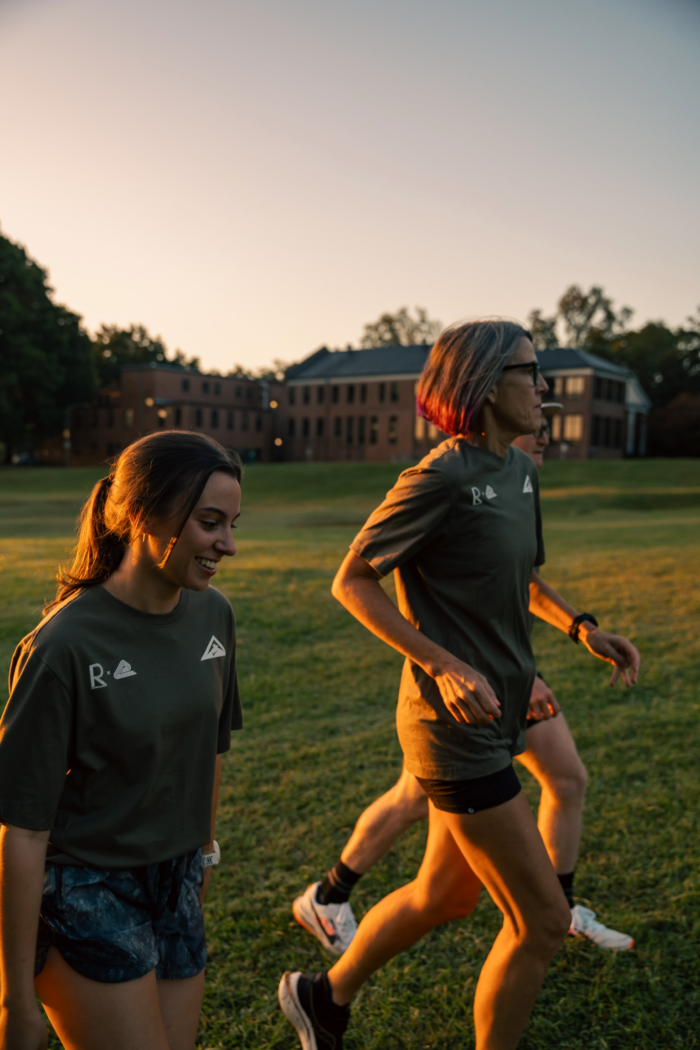
The act of running isn’t what got me hooked (especially not at first, when every run really sucked). It was the community of people that came with it that kept me coming back for more.
Find your community by following friends on Strava, joining a few local run clubs, or becoming a regular at your favorite run shop. There are plenty of ways to find your people in the run community.
Raleigh is a city with runners of all capabilities, and plenty of opportunities to meet them! Come to run club, or track night, and strike up a conversation with whoever’s next to you. I guarantee you’ll find more than one kind face, ready to encourage your run journey.
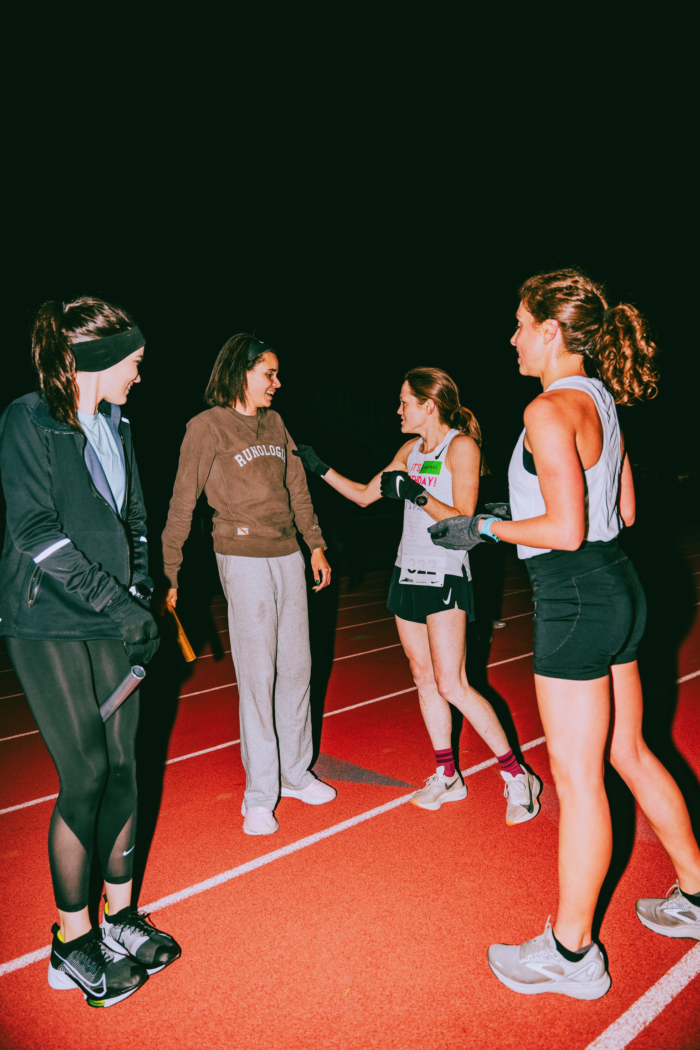
6. Listen to your body.
It can be difficult to slow down enough to prioritize this, but ensuring that you’re feeding your body when it’s telling you that it’s hungry, or stopping when it’s telling you that it’s hurting, can be instrumental in your training. Ignoring your body’s signs will only lead you to further discomfort, fatigue, or injury. Learning to trust yourself, and your body, is one of the greatest gifts running can give.
7. Celebrate yourself! Even when your run sucked. (Bonus Tip!)
As you commit to running, commit to the practice of gratitude. Not every run goes to plan, or even goes well, and it’s okay to be honest with yourself about that. Failure and setbacks are a normal part of anyone’s running journey. As you acknowledge that, make sure you recognize and reward the fact that you’re still going for it, despite the suck.
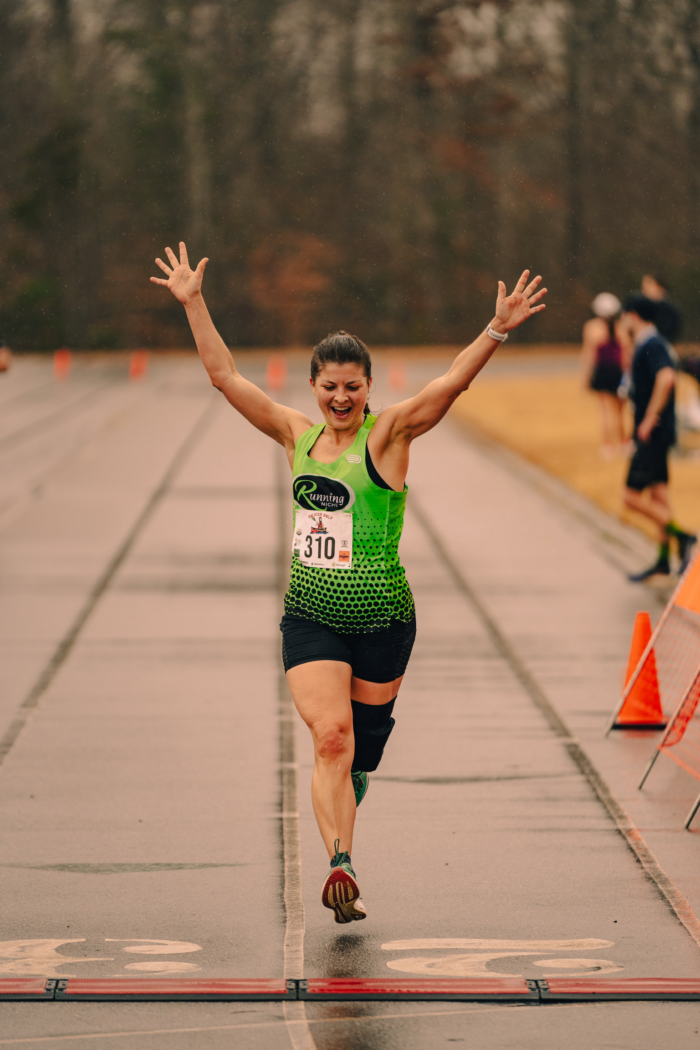
Focusing on your “why” can help you move through tougher moments into a place of gratitude. Whether you have a race goal, a PR to beat, or even if you’re running for general wellness – every step forward is a step forward, no matter how much ground you’re covering.
As you start (or re-start) your running journey, we’d love to be there for you. Come by the shop, or join us for a run. All runners, all levels, always welcome!
